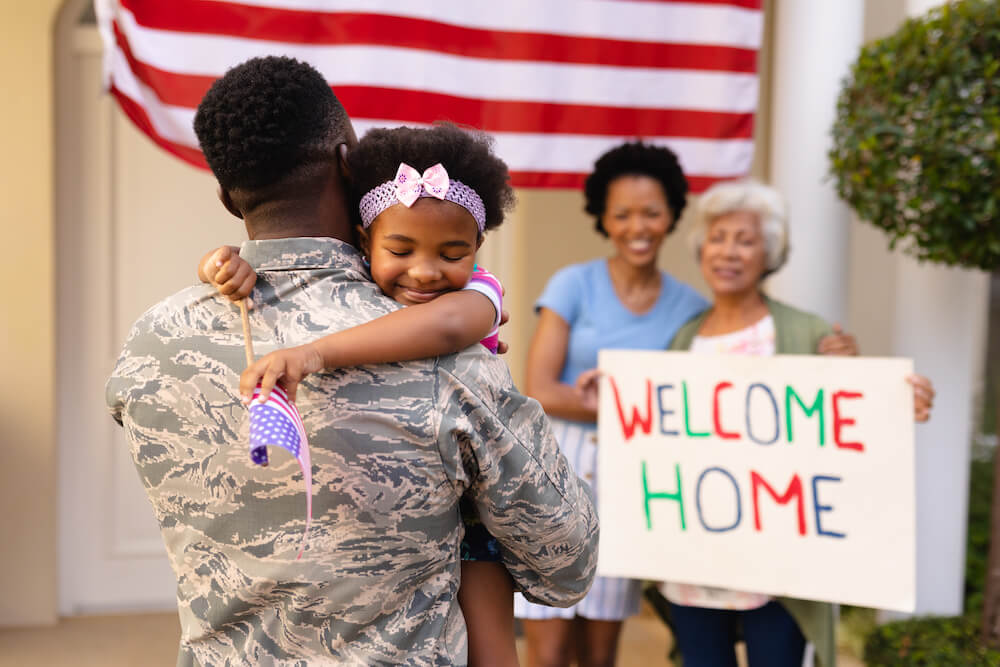Life
Reintegrating into Civilian Life: A Guide for Veterans
Title: “Reintegrating into Civilian Life: A Guide for Veterans”
Introduction
Leaving the military and transitioning back into civilian life can be a challenging journey for veterans. After dedicating a significant part of their lives to service, many veterans find themselves at a crossroads when it’s time to reintegrate into society. This blog article aims to provide a comprehensive guide on how to successfully reintegrate into civilian life after being in the military. Whether you’re a recent veteran or have been out for some time, these tips and strategies will help you navigate this important transition.
Section 1: Preparing for Transition
1.1 Self-Assessment
Before embarking on the journey of reintegration, it’s crucial to conduct a thorough self-assessment. This involves reflecting on your military experience, your skills, interests, and your personal goals. Consider the following questions:
- What were your primary roles and responsibilities in the military?
- What skills and qualifications did you acquire during your service?
- What are your short-term and long-term career goals?
- What are your personal interests and passions?
1.2 Financial Planning
Financial stability is a significant concern during the transition process. Take the following steps to ensure a smooth financial transition:
- Create a budget: Develop a realistic budget that outlines your expected income and expenses in civilian life.
- Review benefits: Understand your military benefits, such as the GI Bill, and explore how they can be utilized for education or training.
- Save for the transition: If possible, build up a financial cushion to cover initial expenses when transitioning out of the military.
Section 2: Seeking Support
2.1 Utilize Veteran Resources
Numerous resources are available to veterans to assist with reintegration:
- VA services: The Department of Veterans Affairs offers healthcare, counseling, and employment assistance.
- Veteran service organizations: Organizations like the American Legion and Veterans of Foreign Wars (VFW) provide support, camaraderie, and advocacy for veterans.
- Online communities: Join online forums and social media groups where veterans share their experiences and offer advice.
2.2 Reach Out to Supportive Individuals
Don’t hesitate to lean on friends and family members for emotional support during this transition. Their understanding and encouragement can make a significant difference.
Section 3: Education and Skill Development
3.1 Pursue Higher Education
Many veterans choose to pursue higher education as a way to enhance their civilian career prospects. Consider using your GI Bill benefits to fund your education and explore degree programs that align with your interests and goals.
3.2 Job Training and Certification
Depending on your career goals, you may need to acquire additional certifications or training. Look into vocational schools, apprenticeship programs, or technical training courses to gain relevant skills for civilian jobs.
3.3 Resume Building
Your military experience has equipped you with a wide range of skills that are valuable in the civilian workforce. Work on translating your military experience into civilian-friendly language on your resume. Highlight leadership, teamwork, problem-solving, and other transferable skills.
Section 4: Finding Employment
4.1 Job Search Strategies
Finding a civilian job may require a different approach than your military career search. Consider these strategies:
- Networking: Attend job fairs, industry events, and connect with professionals in your desired field.
- Online job boards: Utilize websites like LinkedIn, Indeed, and USAJOBS to search for job opportunities.
- Government programs: Explore programs that offer job placement assistance for veterans.
4.2 Interview Preparation
Prepare for interviews by practicing common interview questions and responses. Highlight how your military experience has prepared you for the position you’re applying for, emphasizing adaptability, leadership, and problem-solving skills.
Section 5: Navigating the Workplace
5.1 Adapt to Civilian Culture
The civilian workplace can be different from the military in terms of culture and structure. Be prepared to adapt and understand that civilian organizations may have different expectations and communication styles.
5.2 Seek Mentorship
Find a mentor within your workplace or industry who can provide guidance and support as you adjust to civilian work life. A mentor can help you navigate office politics, career development, and networking opportunities.
5.3 Self-Care and Well-being
Maintain a healthy work-life balance and prioritize self-care. Veterans may face unique challenges, such as PTSD or adjustment issues. Seek professional help if needed and don’t hesitate to discuss accommodations with your employer.
Section 6: Continuing Personal Growth
6.1 Set Goals
Continuing personal growth is essential in civilian life. Set short-term and long-term goals for your career and personal life to stay motivated and focused.
6.2 Stay Connected
Maintain connections with your military comrades and friends. These relationships can provide emotional support and a sense of camaraderie.
6.3 Give Back
Consider giving back to the veteran community by volunteering or mentoring other transitioning veterans. Your experience can be valuable in helping others navigate this challenging journey.
Conclusion
Reintegrating into civilian life after military service is a significant life transition that requires careful planning and adjustment. By following the steps outlined in this guide, veterans can successfully navigate the challenges and opportunities that await them in the civilian world. Remember that the journey may be challenging at times, but with the right resources and support, you can thrive in your post-military life.


